
Right in this very moment, wild bilberries high up in the mountains are being picked and combed for their delicious and richly nutritious berries.
Did you know, they are 3x more powerful than ordinary blueberries?!
But the season doesn’t last more than a few weeks, so take a hike and get them while they are fresh (or go to the market and buy a bucketful for yourself) and aim to process them no later than twenty-four hours after harvest.
Of course, a berry by any other name could not taste so bilberry-ish.
Or could it? Bilberries grow in cold climates all over the world, including Canada, northern Europe and in the chilliest parts of Australia, yet they are known by several common names, hence the confusion in thinking they may be blueberries.
Take a quick look at bilberries around the northern hemisphere:
- blåbär – in Sweden where bilberry drinks have been popular for centuries (blåbär means both blueberry and bilberry)
- blaeberries – in parts of Scotland
- fraughans – in Ireland
- huckleberries – in regions of America
- mustikat – in Finland
- whortleberries or wimberries – in certain parts of England
They are also known as European blueberries, coming from the plant Vaccinium myrtillus, not Vaccinium cyanococcus (American blueberry).
In the States, huckleberries are native to the northwest, growing as far north as Alaska, and moving downward through Washington, Oregon, Wyoming and Montana.
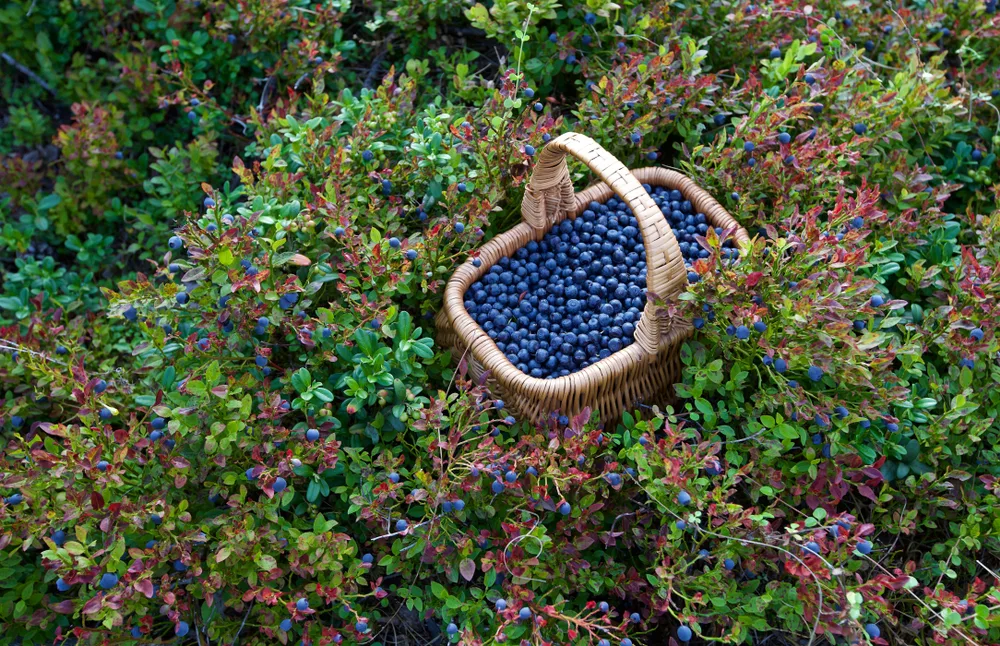
Differences between bilberries and American blueberries
Blueberries are generally cultivated for commercial purposes and are widely available, as they grow on large (high) bushes with fruits in bunches.
Bilberries, on the other hand, are harvested from wild plants and grow on low shrubs with nutrient-dense solitary fruits.
Hybrid cultivar blueberries have a less intense color, whereas bilberries can be used as a clothing dye, ranging from a stunning purple to dark grey.
Bilberries are also more tart with numerous seeds, owning up to their overall superior nutritional value.
No matter which “blueberry” you choose, this recipe for making syrup applies to either berry. Simply adjust the honey level to your preference.
Benefits of wild bilberries
Bilberries are extremely rich in anthocyanins and antioxidants, as such they are considered by many as a wild medicine used in the treatment of:
- glaucoma
- cataracts
- diarrhea
- inflammatory bowel disease
- cardiovascular disease
- diabetes
- varicose veins and hemorrhoids
They are rich in essential nutrients, including vitamins A, B1, B2, C, E and K. Minerals are aplenty too – iron, manganese and zinc.
If you are looking to improve your eyesight, it doesn’t hurt to add a splash of bilberry syrup to your morning smoothie!
Ingredients for making wild bilberry syrup with honey
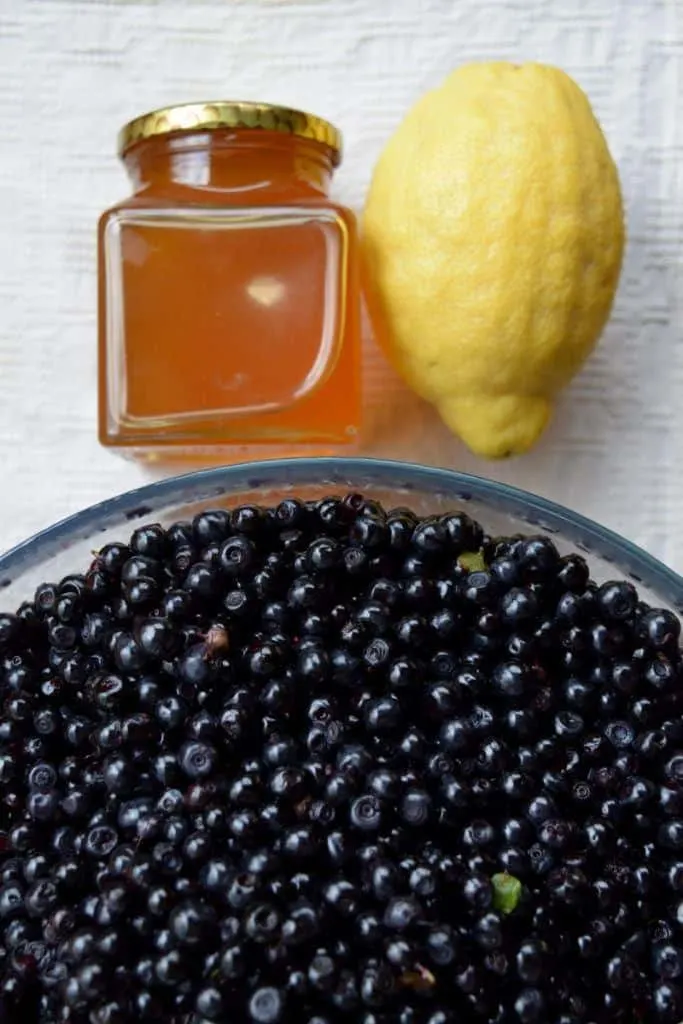
- 8 cups bilberries
- 1/2 cup honey
- Juice of half a lemon
Step 1
Forage the forest floor, or head straight to the market, for at least a pound of bilberries. This recipe is easy to double, even triple, so go for as many berries as you can find.
Step 2
Wash berries in cool water and pick out all leaves and inferior fruit. It’s a tedious process, but worth it in the end, especially if you are making both jam and syrup at the same time.
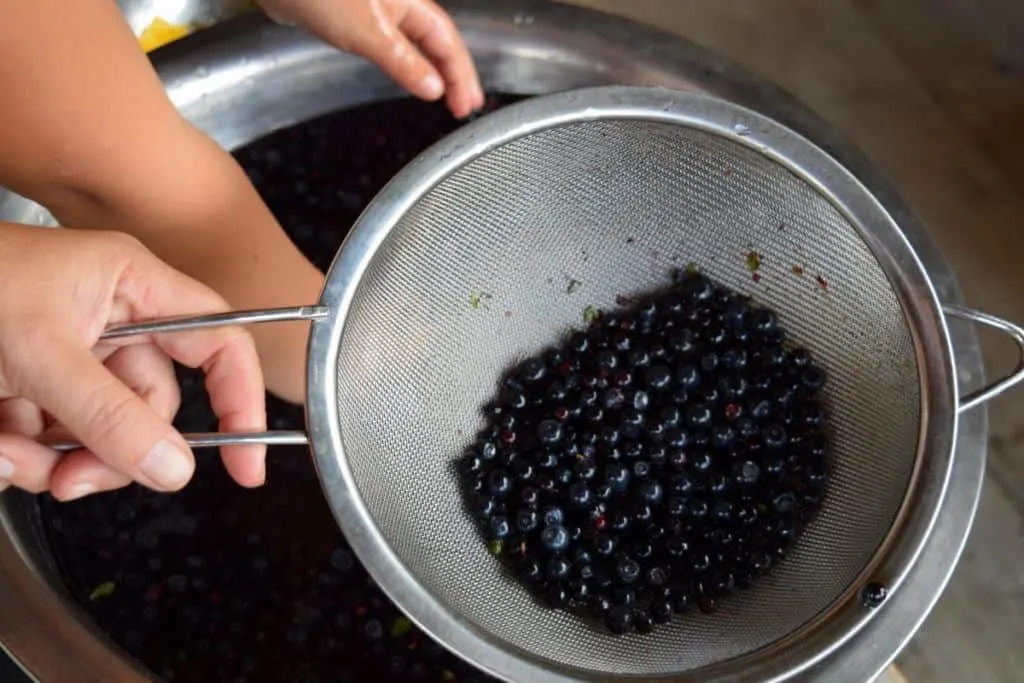
Step 3
Bring berries to a gentle boil on the stove, stirring often.
Step 4
Once the berries have released some of their juices, it is time to take the pot off the heat. Put the berries through a strainer, separating the juice from the pulp in two pots. Using the backside of a spoon, mash them gently against the side, extracting as much juice as possible.
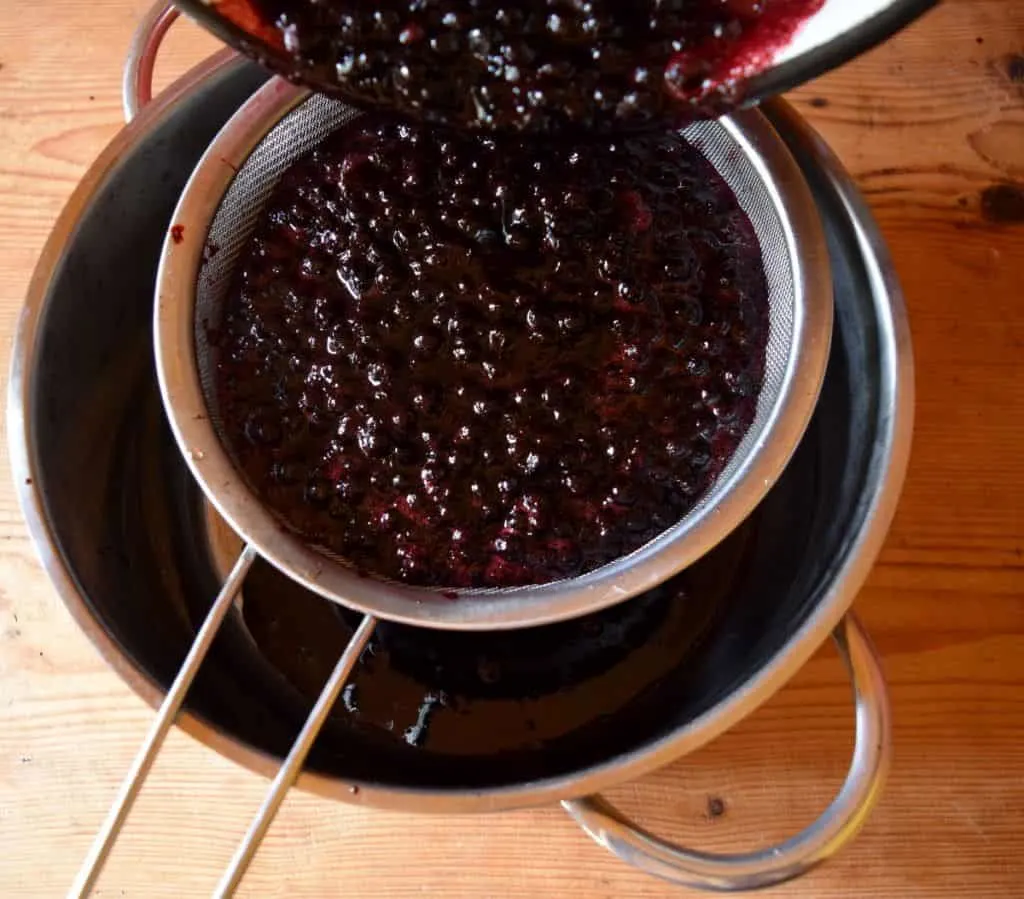
Step 5
Now that you have separated the solids, set them aside for later use – do not discard them!
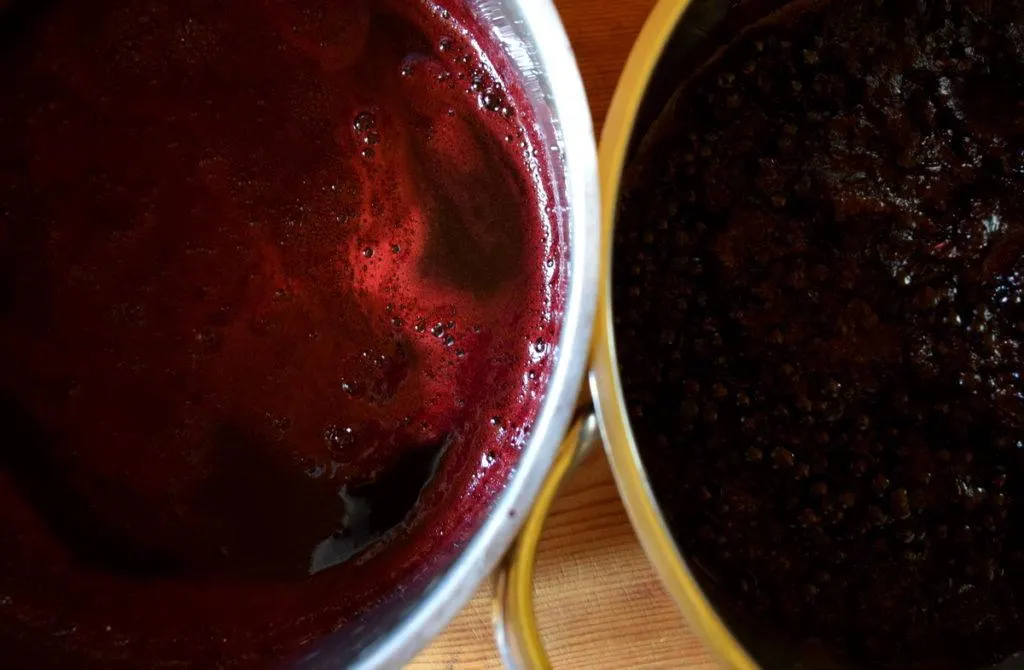
Step 6
Return the berry juice back to the stove. Add the lemon juice and honey, stirring constantly.
Step 7
Bring the syrup to a boil over medium-high heat, about 10-15 minutes.
Step 8
Remove pot from heat. Use a ladle and funnel to pour into already sterilized jars.
Step 9
Use a hot water bath to complete the process of preserving your bilberry/blueberry syrup.
Step 10
Allow jars to slowly come to room temperature. Check the seals, label and store away for winter. If you have an odd jar that doesn’t seal, simply put it in the fridge and start enjoying it right away!
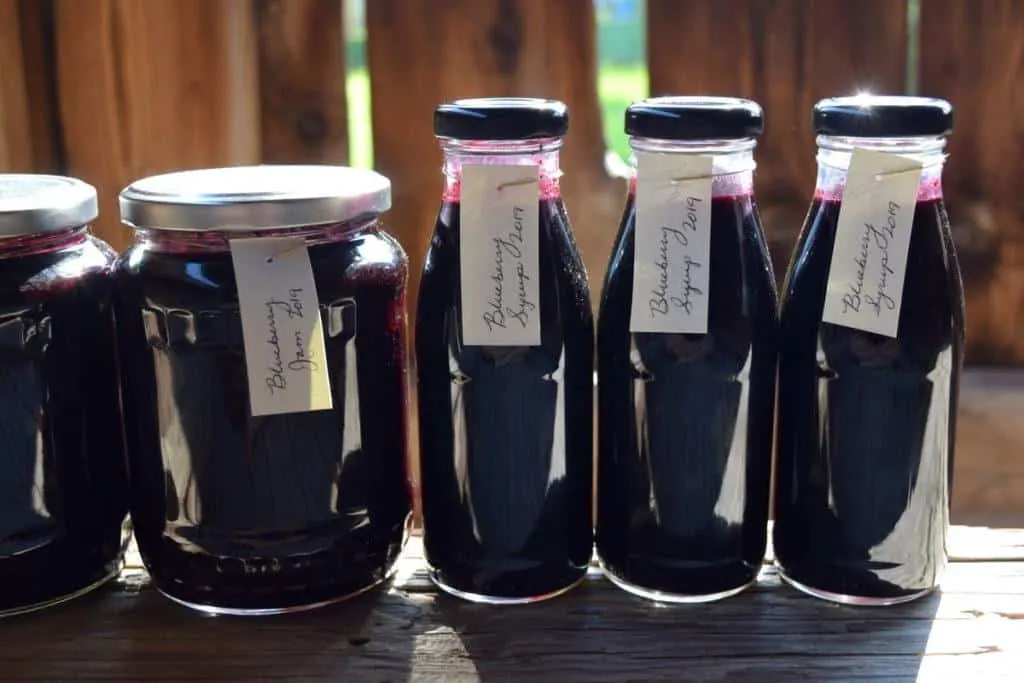
Making use of the berry solids
When you get to point of having a full pot of bilberry, or blueberry, solids, now you can make a thicker jam by cooking it longer on the stove. Add honey, or sugar to taste, along with fresh lemon juice and gently boil for half an hour.
Now you can ladle the hot bilberry sauce into jars and put them in a water bath for 10 minutes.
Alternatively, you could freeze the bilberry sauce in ice-cube sized portions, ready to thaw at any moment. Or you can dehydrate the mass in a thin layer and turn it into bilberry fruit leather.
Bilberries are for more than just pancakes!
While a generous dose of bilberry, or blueberry, syrup is scrumptious over a scoop of vanilla ice cream, it is also fantastic as a marinade for pork or beef. As with cranberries, you can often pair bilberries and blueberries with meat.
Bilberry syrup can also be:
- diluted in cold water as a refreshing drink
- diluted in boiling water as a winter, warming tea
- added to sparkling water or champagne
- used in a salad dressing with apple cider vinegar and fresh herbs
Bilberries can also be dehydrated and used as “hedgerow currants”. Toss them in your cookie and cake batter, add them to your homemade granola or flavor your festive spirits (brandy, gin, vodka). For even more blueberry/bilberry recipes, you’ll want to check out Tracey’s blueberry recipe round-up.
Similarly, they can be turned into tinctures, made of both berries and leaves.
Ready to find out more about what bilberries can do for you? Discover all the health benefits of bilberries here.
What’s not to love about a blueberry, er, bilberry?

Get the famous Rural Sprout newsletter delivered to your inbox.
Including Sunday musings from our editor, Tracey, as well as “What’s Up Wednesday” our roundup of what’s in season and new article updates and alerts.

